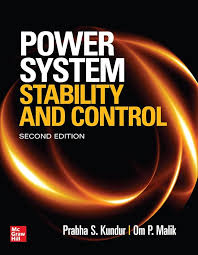Executive Summary
This white paper explores the intricate relationship between reactive power compensation, grid-edge control, and transient stability in modern power systems. The increasing penetration of renewable energy sources and distributed generation has posed significant challenges to grid stability. To address these challenges, effective reactive power compensation and advanced grid-edge control strategies are crucial. This paper delves into the fundamental concepts, technical challenges, and emerging solutions to ensure the reliable and efficient operation of power systems.
Introduction
The integration of renewable energy sources, such as wind and solar power, has revolutionized the power generation landscape. However, the intermittent nature of these resources can lead to voltage fluctuations, power quality issues, and potential instability in the power system. Reactive power compensation and grid-edge control play vital roles in mitigating these challenges and maintaining grid stability.
Reactive Power Compensation: A Cornerstone of Grid Stability
Reactive power is essential for maintaining voltage levels and system stability. It is primarily provided by synchronous generators, but with the increasing penetration of renewable energy sources, the traditional sources of reactive power are diminishing. Reactive power compensation devices, such as static VAR compensators (SVCs), thyristor-controlled reactor (TCR), and static synchronous compensators (STATCOMs), are employed to regulate voltage levels and improve power system stability.
Grid-Edge Control: Enabling Intelligent Grid Operations
Grid-edge control refers to the control of devices and systems at the interface between the distribution and transmission networks. Advanced grid-edge control strategies, such as voltage and reactive power control, frequency control, and power quality control, are essential for ensuring the seamless integration of DERs and maintaining grid stability.
The Interplay of Reactive Power Compensation and Grid-Edge Control
Reactive power compensation and grid-edge control are closely intertwined. Effective grid-edge control strategies can optimize the utilization of reactive power compensation devices, leading to improved system performance. By coordinating the operation of various grid-edge devices, it is possible to:
- Enhance Voltage Stability: Maintain voltage levels within acceptable limits, preventing voltage collapse and blackouts.
- Improve Power Quality: Mitigate power quality issues, such as harmonics, voltage sags, and voltage swells.
- Facilitate Grid Integration of DERs: Enable the smooth integration of renewable energy sources and other distributed generation resources.
- Enhance System Resilience: Improve the system's ability to withstand disturbances and recover from faults.
Challenges and Emerging Solutions
While reactive power compensation and grid-edge control are powerful tools for enhancing grid stability, several challenges remain:
- Dynamic Nature of Renewable Energy: The intermittent nature of renewable energy sources poses challenges for accurate forecasting and real-time control.
- Complex System Dynamics: Power systems are complex systems with nonlinear dynamics, making it difficult to predict and control their behavior.
- Cybersecurity Threats: The increasing reliance on digital technologies in power systems exposes them to cyberattacks, which can compromise system security and reliability.
To address these challenges, researchers and industry experts are exploring advanced solutions, including:
- Artificial Intelligence and Machine Learning: AI and ML techniques can be used to improve forecasting accuracy, optimize control strategies, and detect anomalies.
- Distributed Control: Distributed control architectures can enhance the resilience and flexibility of grid-edge control systems.
- Advanced Communication Technologies: Reliable and secure communication networks are essential for coordinating the operation of grid-edge devices.
- Cybersecurity Measures: Robust cybersecurity measures must be implemented to protect critical infrastructure from cyberattacks.
Conclusion
Reactive power compensation and grid-edge control are indispensable tools for ensuring the reliable and efficient operation of modern power systems. By effectively integrating these technologies, it is possible to address the challenges posed by the increasing penetration of renewable energy sources and maintain a stable and resilient power grid. Future research and development efforts should focus on further advancing these technologies to meet the evolving needs of the power industry.
References:
- Basso, Christophe. Switch-Mode Power Supplies: SPICE Simulation and Practical Design. McGraw-Hill Education, 2015.
- Kundur, Prabha. Power System Stability and Control. McGraw-Hill Education, 1994.
- IEEE Standards Association: https://www.nrel.gov/
- Electric Power Research Institute (EPRI):
Note: To obtain the most up-to-date information and specific requirements, it is recommended to consult with industry experts, regulatory authorities, and the latest research publications.



